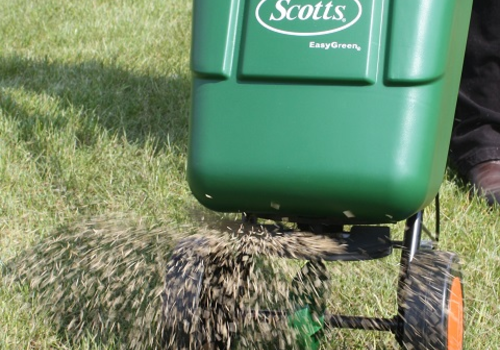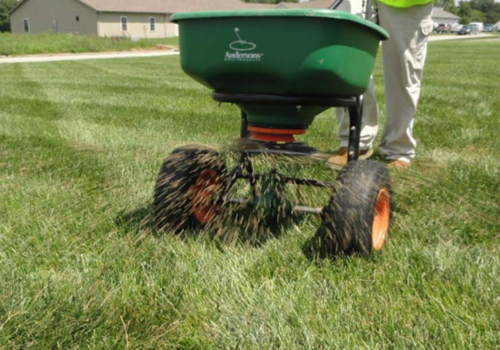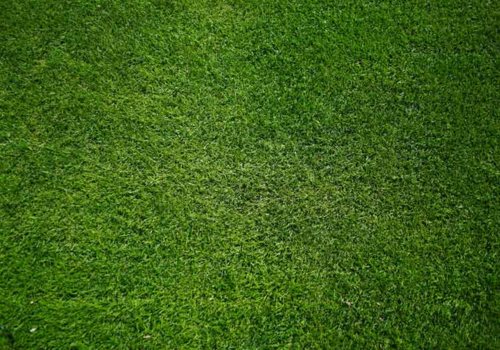Clay soil is common across the UK and can be one of the most difficult soil types to manage. It holds water, compacts easily, and tends to stay wet in winter but dry out and crack in summer. All this makes it a tough combination for growing healthy grass. However, with the right approach, it’s entirely possible to create a hard-wearing, good-looking lawn or paddock on clay soil.
The key lies in choosing the right grass seed as well as preparing the soil properly. Boston Seeds offers several grass seed mixes designed to cope with heavy soils, and with a bit of groundwork, you can achieve long-lasting results, whether you’re tackling a garden lawn or a well-used equestrian field.
What Makes Clay Soil a Challenge?
Clay soil has very fine particles that pack tightly together, which means it holds on to water and stays wetter for longer than other soil types. That can lead to waterlogging in winter and surface runoff when it’s saturated. In dry weather, the surface can bake hard and crack which makes it difficult for new grass to get established.
Compaction is another common problem. Heavy clay soils can become dense under foot traffic, hooves, or machinery, which limits airflow and root development. Grass struggles to send roots deep enough to anchor itself or access moisture, especially in drier months.
Not all grass species can tolerate these conditions. Some need better drainage or lighter soil to thrive. That’s why seed selection is so important as certain types are much better suited to clay and will establish more reliably if you give them the right start.
The Best Grass Seed Types for Clay Soil
Clay soil needs grass varieties that can cope with wet conditions, shallow root zones, and occasional compaction. Not all grass types are up to the job, but a few are known to do well on heavier ground and Boston Seeds can supply a range of mixes that combine these for reliable, long-term results.
Creeping red fescue is a dependable choice. It’s naturally low-maintenance and spreads through creeping roots, which helps stabilise the soil and fill out patchy areas over time. It also tolerates the damp, heavy conditions clay soil often brings.
Perennial ryegrass is another solid option, especially where wear and tear is a concern. It establishes quickly, making it ideal for lawns or paddocks that need to recover fast after use. And while ryegrass prefers decent drainage, it still performs well on clay if the surface is prepared properly.
If you’re reseeding a lawn, Boston Seeds’ ChildsPlay Grass Seed is our top choice for clay-based gardens. They’re designed for everyday use and contain exactly the kinds of grasses that will take hold in tougher ground.
The key is to choose a mix that matches the conditions rather than fighting against them. With the right seed, even heavy clay can support a healthy, lasting sward.
How to Prepare Clay Soil for Grass Seed
Clay soil can be stubborn, but with the right preparation, you can create a solid foundation for healthy grass. Follow these practical steps to give your seed the best chance of success.
1. Check your soil type
Do a quick squeeze test. If the soil feels sticky when wet and forms a firm ball, it's clay. This helps you know what you’re working with and how much improvement is needed.
2. Improve drainage and break up the surface
Use a garden fork or hollow-tine aerator to spike the ground and relieve compaction. For small areas, a fork will do. Larger areas may need machinery. Work in a bit of sharp sand or well-rotted organic matter, just the top few inches and always avoid compost or anything too rich at this stage.
3. Avoid deep digging or rotovating
Clay compacts further when overworked. Keep any soil disturbance shallow. Digging deep can smear the layers and make drainage worse, not better.
4. Rake to create a fine tilth
Break down any large clumps and level the area. The top layer should be crumbly and even. This gives the seed a better surface to settle into and improves germination.
5. Avoid sowing during wet spells
Don’t seed if the ground is saturated or sticky underfoot. Wait for a dry window in early autumn or mid-spring when conditions are cooler and the soil holds moisture without being waterlogged.
6. Sow and press the seed in
Spread your chosen seed mix evenly and press it gently into the surface. Use a roller or simply walk over the area. Don’t bury deep, just enough to maintain a good seed-to-soil contact. This is key.
7. Add a light top dressing (optional)
A thin layer of sand or screened topsoil can help the seed settle and protect against drying out or washing away, especially if the area is slightly sloped or exposed.
With clay soil, success comes down to patience and surface preparation. These simple steps help avoid common issues and give your grass the best possible start.
Ongoing Care and Maintenance for Clay Soil Lawns
Once the grass is up and growing, looking after a lawn on clay soil comes down to consistency. Clay holds onto water and compacts easily, so your maintenance routine should focus on keeping the ground open and the roots healthy.
Aerating once or twice a year helps stop the surface from sealing over. Autumn and spring are the best times to do this, especially if the lawn gets a lot of use. For small areas, a garden fork does the job. For larger lawns or paddocks, a mechanical aerator will save time.
Top dressing with a thin layer of sharp sand or screened compost each year can also make a real difference. It improves surface drainage and helps build structure in the top layer of soil without disrupting what’s already growing.
Avoid overwatering. Clay holds moisture well, so only water during long dry spells. Too much can leave the ground soggy and encourage shallow rooting.
When it comes to mowing, wait until the surface is dry. Cutting wet grass on soft clay risks leaving ruts that can be hard to fix. Keep the blades sharp and avoid taking off too much at once.
If your lawn starts to feel spongy or looks tired in autumn, scarifying can help remove thatch and let more light and air reach the soil. Just be careful not to overdo it, especially on new lawns that haven’t fully established.
Regular maintenance like this keeps clay soil workable and gives your grass the best chance to stay strong year after year.
Common Mistakes to Avoid When Seeding on Clay
Due to a number of factors, clay soil needs a bit of extra care, so it’s important not to rush the process or miss out key steps, as this can lead to poor growth of your new lawn grass. Here are some of the most common issues faced by gardeners in the UK and what you can do to help get the best results.
Sowing into waterlogged ground
If the surface is too wet, seeds can rot before they germinate. Wait until the ground is moist but not saturated, and always avoid sowing straight after heavy rain.
Ignoring compaction
Compacted clay doesn’t let roots breathe. Before sowing, always aerate the surface to help water drain and give seedlings a better start.
Choosing the wrong seed
Fine-bladed or ornamental mixes often struggle on heavy soils. Stick with hard-wearing varieties like ryegrass, fescue, or meadow grass that can cope with poor drainage.
Overworking the soil
It’s tempting to dig or rotovate deeply, but this can seal the soil and make drainage worse. Keep cultivation shallow and focused on the top layer.
Applying too much fertiliser too soon
Clay soils already hold onto nutrients well. Too much nitrogen early on can push leafy growth before roots are ready. Wait until the grass is established, then use a low-nitrogen or slow-release feed if needed.
Avoiding these common mistakes gives your grass the best chance to take root and thrive, even in tough conditions.
Frequently Asked Questions
What grass seed is best for clay soil that floods?
For areas prone to flooding, choose BS Waterlogged and Wet Soils Grass Seed.
Can I improve clay soil without digging it all up?
Yes. Use a garden fork or aerator to relieve compaction, and apply sand or organic matter to improve structure gradually.
How long does grass take to grow on clay soil?
Germination usually takes 7–21 days, but growth may be slower due to moisture levels and soil density.
Will grass seed wash away on clay?
It can be on sloped or compacted ground. Press the seed into the surface and use a light dressing to help keep it in place.
Do I need special fertiliser for clay soil lawns?
Not usually. Clay holds nutrients well. Use a low-nitrogen fertiliser only after the grass has been properly established.


